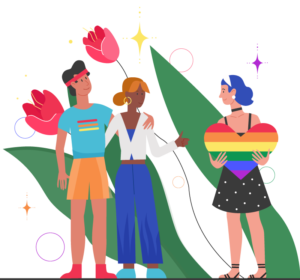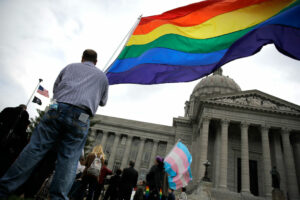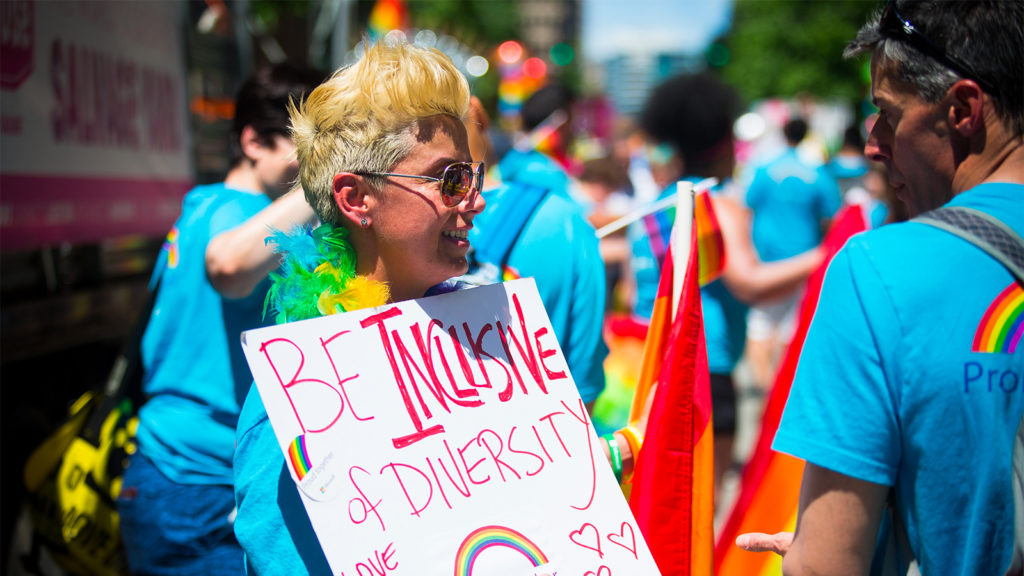In recent years, the topic of LGBTQ rights has gained significant attention and support worldwide. As societal understanding and acceptance of diverse sexual orientations and gender identities continue to evolve, it becomes crucial to examine the status of LGBTQ rights in educational institutions, particularly in schools. This article aims to shed light on the importance of LGBTQ rights in schools, the progress made so far, the challenges faced by LGBTQ students, and the role schools play in promoting inclusivity.
Contents
- 1 Understanding LGBTQ Rights
- 2 LGBTQ Rights Movements in Schools
- 3 Challenges and Discrimination Faced by LGBTQ Students
- 4 The Role of Schools in Promoting LGBTQ Rights
- 5 Benefits of LGBTQ-Inclusive Education
- 6 Supporting LGBTQ Students and Allies
- 7 Overcoming Challenges and Pushing for Progress
- 8 Conclusion
Understanding LGBTQ Rights

LGBTQ is an acronym that stands for lesbian, gay, bisexual, transgender, and queer/questioning. These terms encompass a range of identities and orientations that deviate from the societal norm of cisgender (identifying with the gender assigned at birth) and heterosexual individuals. Recognizing and respecting LGBTQ individuals’ rights is crucial for fostering a more inclusive and equitable society.
Ensuring LGBTQ rights in schools is essential for creating safe and supportive environments where students can thrive academically, emotionally, and socially. Students should feel respected and valued, regardless of their sexual orientation or gender identity. By promoting LGBTQ rights, schools play a vital role in shaping a generation that celebrates diversity and champions equality.
LGBTQ Rights Movements in Schools
The struggle for LGBTQ rights in schools has a long history. Over the years, activists and organizations have fought for LGBTQ-inclusive policies, protections against discrimination, and the creation of supportive environments. In the United States, landmark cases and legislation, such as the Supreme Court ruling in Obergefell v. Hodges (2015) legalizing same-sex marriage, have paved the way for greater recognition of LGBTQ rights.
Although challenges persist, significant progress has been made in advancing LGBTQ rights in schools. Many educational institutions have implemented policies and initiatives to address the needs of LGBTQ students. Some examples include establishing LGBTQ student organizations, implementing gender-neutral restrooms, and incorporating an LGBTQ-inclusive curriculum. These efforts aim to foster inclusivity and promote understanding among all students.
Challenges and Discrimination Faced by LGBTQ Students
Here are some of the challenges and forms of discrimination faced by LGBTQ students:
- Bullying and Harassment: LGBTQ students are at a higher risk of experiencing bullying, harassment, and verbal or physical abuse compared to their heterosexual and cisgender peers. This can occur from fellow students as well as teachers or school staff. It can lead to feelings of isolation, low self-esteem, and academic difficulties.
- Lack of Inclusive Policies: Many educational institutions lack comprehensive policies that protect LGBTQ students from discrimination and create inclusive environments. This can include a lack of anti-bullying policies, non-discrimination policies, and gender-neutral facilities, which can contribute to an unwelcoming atmosphere for LGBTQ students.
- Misinformation and Stigma: LGBTQ students often face misinformation and stigmatization regarding their sexual orientation or gender identity. This can come from peers, teachers, or even textbooks. Negative stereotypes and biases can lead to a hostile environment and marginalization.
- Mental Health Challenges: LGBTQ students are at a higher risk of experiencing mental health challenges such as depression, anxiety, and suicidal ideation due to the discrimination and rejection they may face. Lack of support and understanding can exacerbate these issues.
- Lack of Supportive Resources: LGBTQ students may face challenges in accessing supportive resources, such as LGBTQ-inclusive sex education, mental health counseling, and support groups. The absence of these resources can hinder their ability to explore their identity and find support within the educational system.
- Disproportionate Disciplinary Actions: LGBTQ students may face disproportionate disciplinary actions compared to their heterosexual and cisgender peers. This can result from biased disciplinary policies or prejudice from school authorities, leading to a negative impact on their academic performance and overall well-being.
The Role of Schools in Promoting LGBTQ Rights

Schools play a crucial role in promoting LGBTQ rights and creating inclusive and affirming environments for all students. Here are some key ways in which schools can contribute to advancing LGBTQ rights:
- Inclusive Policies: Schools should establish and enforce comprehensive anti-discrimination policies that explicitly protect students based on their sexual orientation, gender identity, and gender expression. These policies should prohibit harassment, bullying, and exclusion based on LGBTQ status.
- Safe and Supportive Environment: Schools need to foster a safe and supportive environment for LGBTQ students. This includes implementing measures to prevent and address bullying and harassment, providing resources and support for LGBTQ students, and training staff on LGBTQ issues to ensure they can respond appropriately and sensitively.
- LGBTQ-Inclusive Curriculum: Schools can include an LGBTQ-inclusive curriculum that reflects the diversity of sexual orientations, gender identities, and histories. This can help challenge stereotypes, promote understanding, and create a more inclusive learning environment for all students. It is important to incorporate LGBTQ perspectives across various subjects, including history, literature, social sciences, and health education.
- Comprehensive Sex Education: Schools should provide comprehensive and LGBTQ-inclusive sex education that covers a wide range of topics, including sexual orientation, gender identity, and healthy relationships. This helps dispel myths and misconceptions, promotes acceptance, and provides vital information to LGBTQ students about their sexual and reproductive health.
- Supportive Student Organizations: Schools can support the formation and operation of LGBTQ student organizations, such as gay-straight alliances or queer student unions. These groups provide a safe space for LGBTQ students and allies to connect, seek support, and advocate for change within the school community.
- Professional Development and Training: Schools should offer ongoing professional development and training opportunities for educators and staff to increase their understanding of LGBTQ issues, inclusive teaching practices, and strategies to create safe and supportive environments. This training can help teachers address bias, handle LGBTQ-related topics in the curriculum, and become effective allies for LGBTQ students.
Benefits of LGBTQ-Inclusive Education
LGBTQ-inclusive education offers numerous benefits for students, schools, and society as a whole. Here are some key advantages:
- Fostering Inclusion and Acceptance: LGBTQ-inclusive education helps create a more inclusive and accepting school environment. It promotes understanding, empathy, and respect for individuals with diverse sexual orientations and gender identities. This not only benefits LGBTQ students but also cultivates a sense of belonging and reduces discrimination and prejudice among all students.
- Improved Mental Health and Well-being: LGBTQ-inclusive education can have a positive impact on the mental health and well-being of LGBTQ students. When students see their identities and experiences reflected positively in the curriculum and school environment, it can alleviate feelings of isolation, shame, and self-doubt. This, in turn, can reduce rates of depression, anxiety, and suicide among LGBTQ students.
- Academic Engagement and Performance: When LGBTQ students feel safe, accepted, and supported, they are more likely to engage in their studies and perform better academically. Inclusive education reduces the stress and emotional burden that can hinder academic achievement. It allows LGBTQ students to focus on their education and reach their full potential.
- Challenging Stereotypes and Bias: LGBTQ-inclusive education challenges stereotypes and biases that perpetuate discrimination. By learning about the diversity of sexual orientations and gender identities, students gain a more nuanced understanding of human experiences and can develop critical thinking skills. This promotes a broader perspective and helps combat prejudice not only against LGBTQ individuals but also against other marginalized groups.
Supporting LGBTQ Students and Allies
These are some of the ways for supporting LGBTQ students and allies:
Supportive Organizations and Resources
Numerous organizations and resources provide support to LGBTQ students, allies, and educators. These organizations offer guidance, counseling, and advocacy for LGBTQ rights in schools. Examples include the Gay, Lesbian, and Straight Education Network (GLSEN), PFLAG (Parents, Families, and Friends of Lesbians and Gays), and local LGBTQ community centers. Students, parents, and educators can benefit from connecting with these organizations for information, assistance, and community support.
Role of Teachers and Administrators
Teachers and administrators play a crucial role in supporting LGBTQ students. They should receive appropriate training on LGBTQ issues, inclusive language, and recognizing and addressing discrimination. By acting as allies and creating a safe space, educators can positively impact the lives of LGBTQ students, providing the support they need to thrive academically and emotionally.
Importance of Peer Support
Peer support networks can greatly contribute to the well-being and inclusivity of LGBTQ students. Schools should encourage the formation of LGBTQ student organizations or Gay-Straight Alliances (GSAs). These groups provide a safe space for LGBTQ students to connect, share experiences, and access peer support. Peer allies and mentors can also play a vital role in promoting acceptance and understanding among students.
Overcoming Challenges and Pushing for Progress

Some of the challenges and hurdles in the progress of LGBTQ rights are:
Advocacy and Activism
Advocacy and activism are essential for driving positive change in schools. LGBTQ students, allies, and supportive organizations should actively engage in advocacy efforts to promote LGBTQ rights and inclusivity. This can involve organizing awareness campaigns, participating in community events, and lobbying for inclusive policies. By raising their voices, individuals and communities can contribute to a more equitable educational system.
Parental and Community Involvement
Parental and community involvement is crucial in promoting LGBTQ rights in schools. Parents should advocate for inclusive policies and resources, engage in dialogue with school administrators, and support their LGBTQ children. Communities can also support LGBTQ students by organizing events, providing resources, and fostering a culture of acceptance and inclusion.
Conclusion
LGBTQ rights in schools are of paramount importance for creating inclusive, safe, and supportive educational environments. Schools play a vital role in promoting acceptance, combating discrimination, and providing the necessary resources for LGBTQ students to thrive. By addressing challenges, fostering inclusivity, and engaging in advocacy, we can work towards a future where LGBTQ rights are fully recognized and respected in all educational settings.
Life may sometimes be challenging for people from the LGBTQ community, but Online LGBTQ Counseling can help. Get experienced LGBTQ therapists at PrideMantra: Book a trial LGBTQ therapy session.


